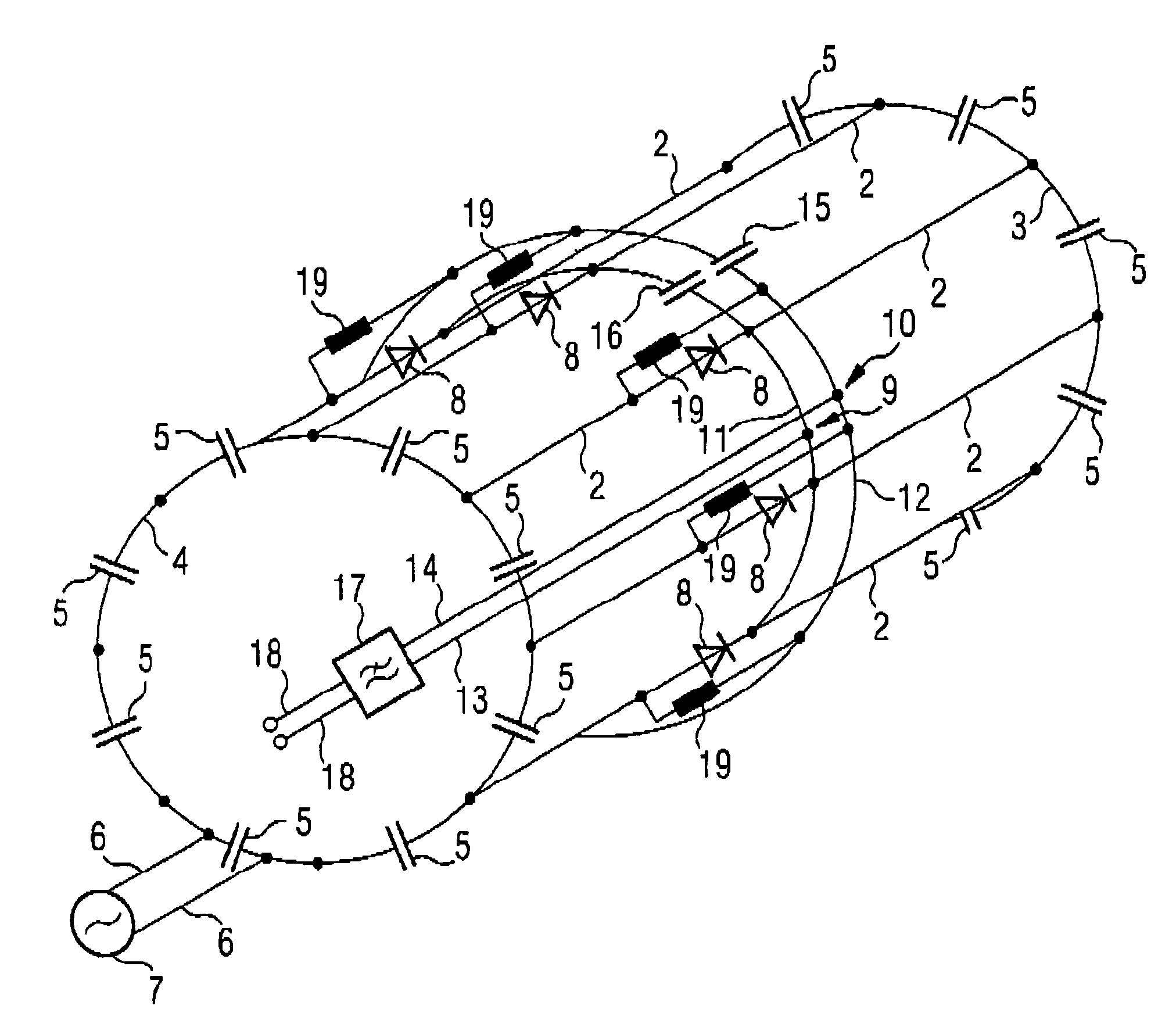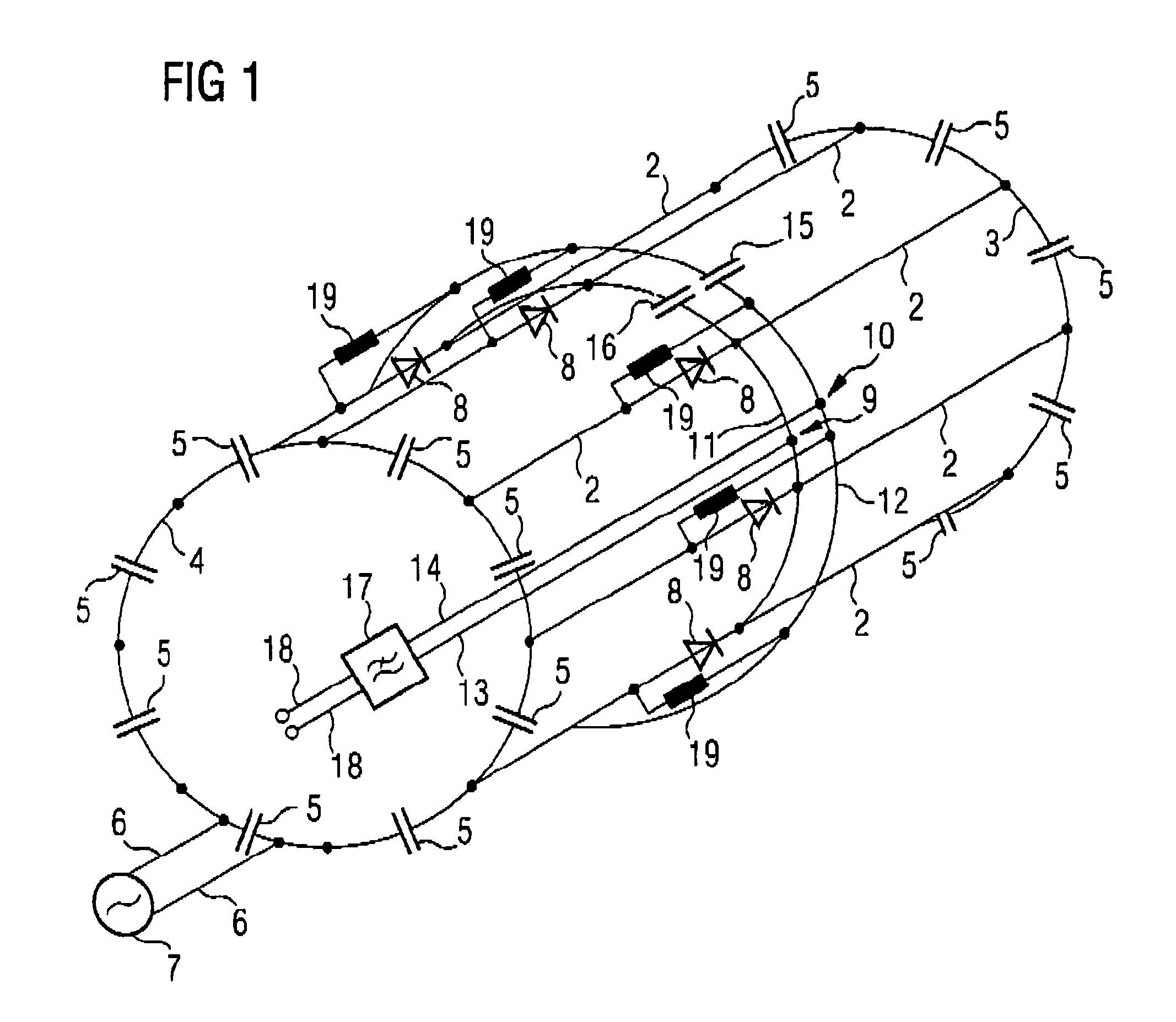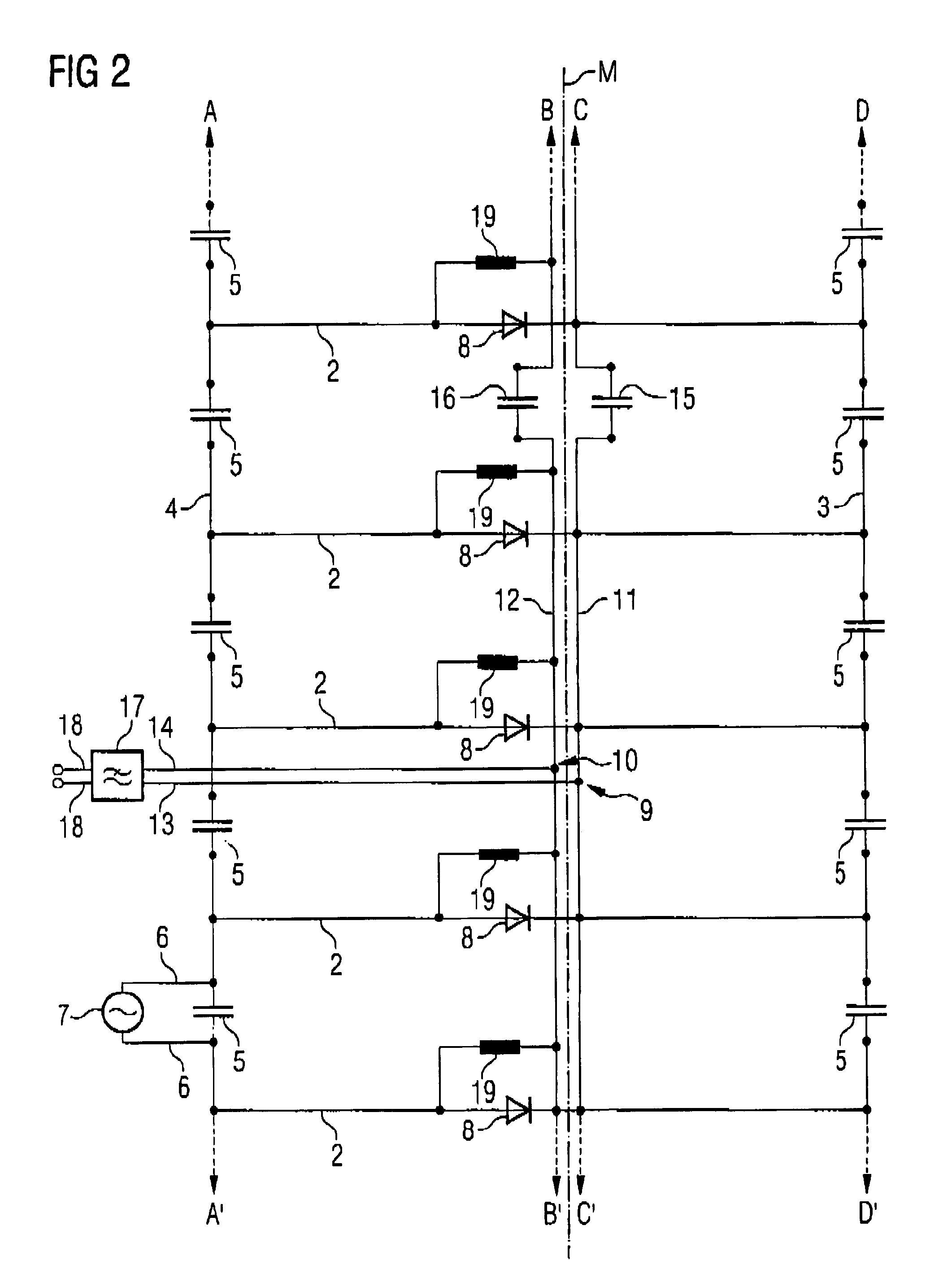Magnetic resonance antenna
a magnetic resonance antenna and antenna technology, applied in the field of magnetic resonance antennas, can solve the problems of incomplete blocking of switching lines, unnecessary and expensive installation of a number of direct current lines within the resonant structure, etc., and achieve the effect of simple, cost-effective and interference-insusceptibl
- Summary
- Abstract
- Description
- Claims
- Application Information
AI Technical Summary
Benefits of technology
Problems solved by technology
Method used
Image
Examples
Embodiment Construction
[0037]FIG. 1 shows the typical assembly of a birdcage structure in the form of a simple three-dimensional wire model. Such a birdcage structure is comprised of a number of equidistant longitudinal antenna rods arranged running in parallel on a cylindrical surface. These longitudinal rods are respectively connected among one another in terms of radio-frequency at the ends via antenna ferrules 3, 4. “Connected in terms of radio-frequency” means, in this context, that a galvanic connection is not mandatory, but rather only a connection transparent for radio-frequency currents has to exist. As shown in FIG. 1—as is typically the case in magnetic resonance antennas according to the birdcage structure—resonance capacitors 5 are located in the antenna ferrules, respectively between two connection points of adjacent longitudinal antenna rods 2. For clarity, here all structures are shown only on the outside of an imaginary cylinder around which the wire model extends.
[0038]In the exemplary e...
PUM
 Login to View More
Login to View More Abstract
Description
Claims
Application Information
 Login to View More
Login to View More - R&D
- Intellectual Property
- Life Sciences
- Materials
- Tech Scout
- Unparalleled Data Quality
- Higher Quality Content
- 60% Fewer Hallucinations
Browse by: Latest US Patents, China's latest patents, Technical Efficacy Thesaurus, Application Domain, Technology Topic, Popular Technical Reports.
© 2025 PatSnap. All rights reserved.Legal|Privacy policy|Modern Slavery Act Transparency Statement|Sitemap|About US| Contact US: help@patsnap.com



